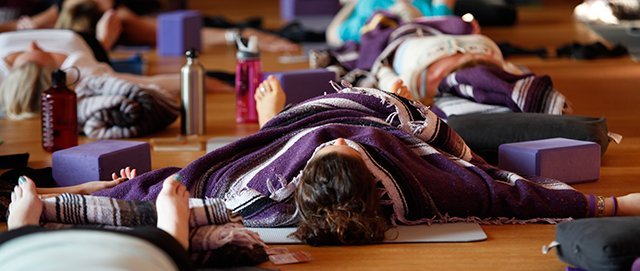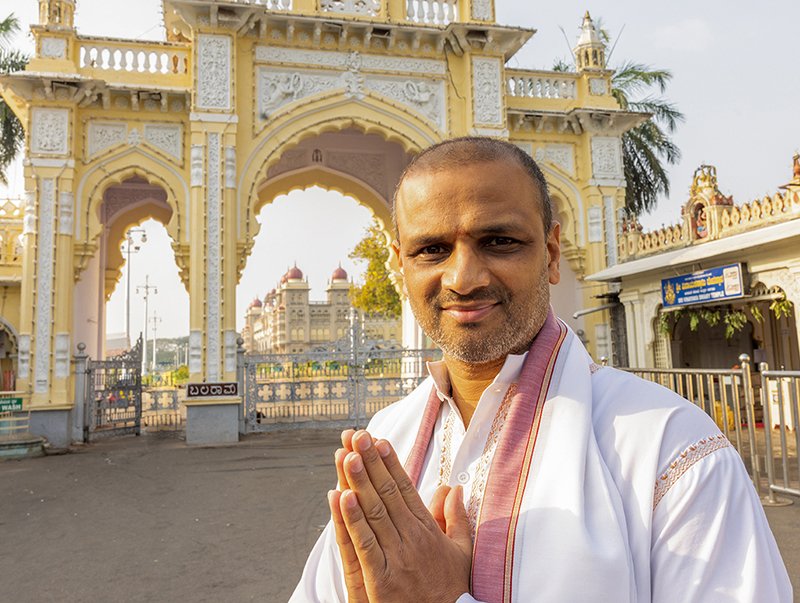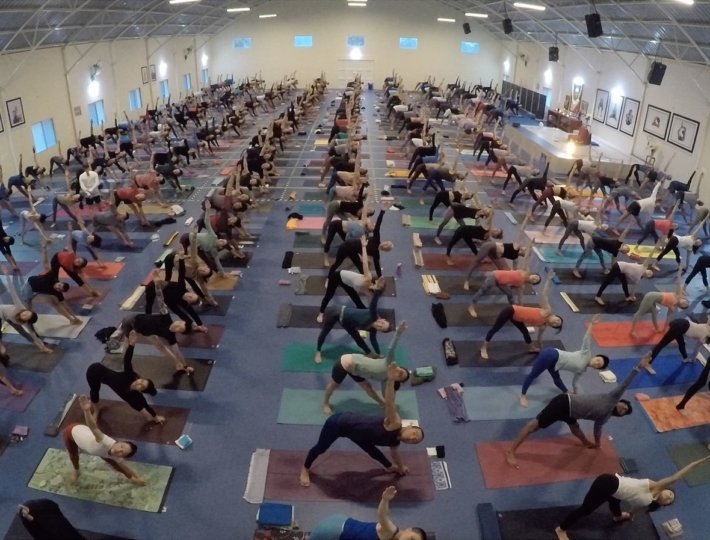Many of us move at an accelerated pace. We drink espresso, gulp down protein shakes, take spin classes, chug green juice, and prioritize productivity at the expense of rest. In an era when stress is a proven cause of disease, restorative, meditative practices can provide gentle care and precious downtime for the body and mind. Yoga nidra, a deep, relaxing practice that generates a state of conscious sleep, or active relaxation, is one potential antidote for a supercharged lifestyle. It is about as close to sleep as you can get in a meditative state, yet still be awake.
I decided to try this practice myself on a weekend retreat after a few particularly busy months. Being the vata-pitta, somewhat Type-A individual that I am, my tentative plan was to unwind for a bit, and most likely duck out of session to hit some vigorous vinyasa classes to get my blood flowing. I tend to want to move, sweat, and exercise rigorously, so I presumed that yoga nidra would feel unproductive to me. I was open to the teaching, and ready to embrace a bit of the restorative yoga, but I figured I wouldn’t last too long.
During the first session, participants were welcomed into an inviting womb-like setting. The room was adorned with warm colors, soft lighting, and copious amounts of bolsters, props, blankets, and pillows. We participated in a brief discussion about expectations and what we sought from this three-day retreat. We were a mixed group—yoga teachers, Ayurveda practitioners, beginner-level students, and folks who just desperately wanted to relax—and it was fascinating to hear others’ aims for the weekend. Some spoke of elevated transcendental states, in which people experienced not only deep relaxation, but also personal insights and awareness. Others praised yoga nidra for the impact it had on their sleep. A couple of participants had severe insomnia and longed to get a good night’s rest. I was intrigued and decided I might not duck out to vinyasa after all. Yoga nidra has been cited as a powerful tool to balance the sympathetic and parasympathetic nervous systems, creating harmony in the body, and bringing balance to the hyperstimulated mind.
Jennifer Reis, a teacher at the Kripalu Center for Yoga and Health and founder of Divine Sleep Yoga Nidra, is a strong proponent of the balancing effects for those who have trouble winding down at the end of the day. “Yoga nidra allows one to turn inward to renew the senses, spend time connecting with our physical and energy bodies, become aware of our thoughts, feelings, and emotions, and to cultivate witness consciousness, to help us react and suffer less,” Reis says.
The structure of a yoga nidra class can vary, but the main features include a period of relaxation in a comfortable, supported position (hence the bolsters and pillows), followed by a guided-awareness meditation that allows thoughts and emotions to gently drift in and out of the mind as one slips into conscious deep sleep. Some teachers lead a body scan or guided visualization, to relax the limbs and central nervous system, and help create the soothing state.
Our retreat instructor Randal Williams, curriculum manager for the Kripalu School of Yoga and Health, says he is a daily practitioner. “Yoga nidra is a balm for the senses, opening space for calm self-awareness and deep integration,” he says. “We live in an information age—a jungle of vast and seemingly infinite available data sets that have the potential to shift our lives for better or worse. The deep quiet awareness and self-care that yoga nidra provides offers the necessary leverage to counteract the excessive input and restore clarity to our body and mind.” Williams notes that in a society where multitasking has been praised as efficient behavior, a meditation technique such as yoga nidra can be hugely powerful. “We tend to jump from one task to the next, impacting our attention span and, not unsurprisingly, actually lowering our IQ,” he says.
Overstimulation and pervasive media use, including the use of multiple devices at once, has an impact on our daily lives and can affect our gray matter. Yoga nidra helps cultivate quiet and dive within.
During the first session, we carefully position ourselves with bolsters, blankets, and as much support as necessary to induce full-body melt. I found myself having to consciously relax and let go quite a few times. My neck muscles were sore, my jaw was tight, and my shoulders were notably close to my ears as I held the remnants of my day. Williams spent time guiding us—noting that we might realize we were incredibly exhausted and fall asleep. He let us know that if we did fall asleep, he might gently nudge us so that we didn’t bother our neighbors. I chuckled a bit to myself, wondering how many of us would be snoozing. Truth be told, the first class had me snoring—just a brief snore that startled me instantly awake, but clearly rest was much needed.
“Yoga nidra is truly ‘good medicine’ for what ails us as human beings,” says Richard Miller, a yoga nidra teacher and clinical psychologist who has brought this teaching to many populations, including college students, veterans, and sufferers of PTSD. The military has seen profound positive effects, and more than 30 VA outposts are currently using the meditation technique. The vastness of quiet within provides the opportunity not only to get centered and calm, but also to integrate feelings and emotions, and to cultivate resilience. “The practices of yoga nidra are designed to help people reconnect to their internal felt-sense of meaning, purpose and value. One mother told me, after practicing yoga nidra with her son who was experiencing PTSD from his wartime experiences in Iraq, ‘I got my son back.’”
The first days following my retreat, I felt like I held a secret—a “happy place” all my own that was accentuated and honed through the guided meditations. I carried this ease through the first weeks, somewhat effortlessly, though now I find that I long for that space and need more devoted time to find it. Quiet, calming, conscious time, feeling physically and mentally supported in the process of yoga nidra, has created an oasis within. It has left me feeling more resilient and slower in my pace, which is a plus for me. Before responding to that email or text message, I have the power of pause on my side, and that not only builds more me-time, but also buoys my resolve. Yoga nidra allows us to fill the well and come from abundance—a deeply powerful practice.










Comments (0)